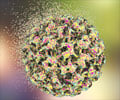
Immune system disorders also etiological factor for NMSCImpairment of the immune system also appears to play an important role in NMSC. Indeed, immunosuppressed organ transplant recipients (OTRs) have a 50�-fold increased risk of developing NMSC compared to the general population. NMSCs occur 10 years earlier in immunosuppressed than in immunocompetent individuals, and the cumulative incidence of skin cancer in patients under immunosuppressive treatment for 10 years is approximately 30%. Thus, NMSCs cause a severe discomfort in OTR individuals, who often, due to the high number of skin lesions, cannot be treated with conventional surgery.
Strong suspicion of etiological role for infectious agentThe link with immune status strongly supports the role of an infectious agent in NMSC. Biological and epidemiological studies indicate that a sub-group of cutaneous human papillomaviruses (HPVs), referred to as beta HPV types, are associated with skin carcinogenesis. However, their direct role in cancer development and in particular whether they synergize with other risk factors, like UV irradiation, remain to be proven.
DKFZ-IARC collaborationIn a collaborative DKFZ-IARC program, we have developed a novel experimental animal model to further evaluate the role of beta HPVs in skin carcinogenesis. We have generated transgenic (Tg) mice expressing the viral oncoproteins E6 and E7 from cutaneous beta HPV38 in the basal layer of the epidermis. We found that chronic skin UV irradiation of these transgenic animals promoted the formation of skin lesions that resembled the squamous cell carcinoma (SCC)-precursor lesions in humans, actinic keratosis and subsequently SCC, closely mimicking the scenario observed in humans. In contrast, wild-type mice developed neither actinic keratosis nor SCC when exposed to the same dose of UV. Dr Christopher Wild, Director, IARC, indicated that "[Our] study shows the existence of a synergy between UV and cutaneous beta HPV in the induction of pre-malignant and malignant skin lesions in this animal model, supporting the further investigation of the role of these viruses in the development of skin cancer in people."
The way forward: possibilities for action"The establishment of the involvement of beta cutaneous HPV types in NMSC development is of paramount importance", continued Dr Lutz Gissmann, Head of the Division of Genome Modifications and Carcinogenesis at DKFZ, "since it may offer the possibility, if causality is established, of novel prophylactic strategies for this disease based on the generation of specific vaccines, as shown for the HPV types associated with cervical cancer". This strategy may be highly beneficial for OTRs, who could be vaccinated before the initiation of the immune suppressive therapy. "However, further research, particularly in humans, is needed in the next decades to understand whether beta HPV prophylactic strategies may possibly have a positive impact on the prevention of NMSC", he concluded.
Advertisement














